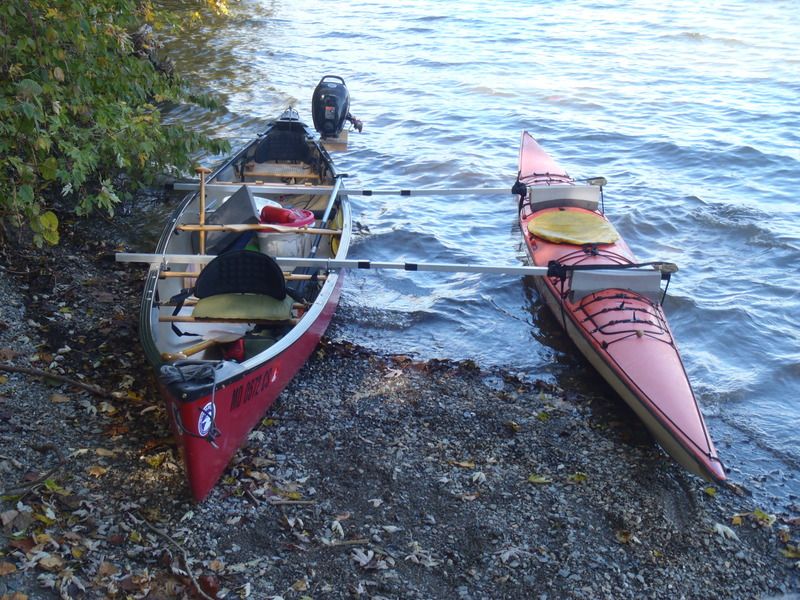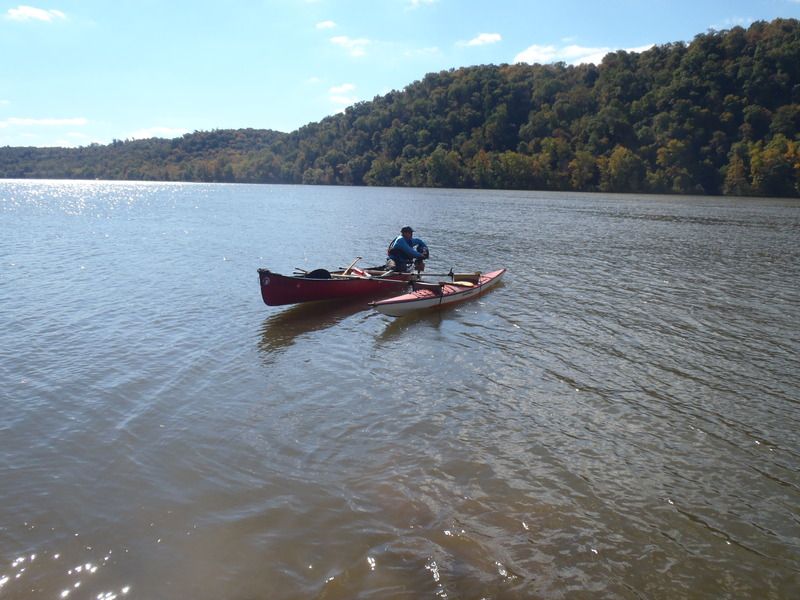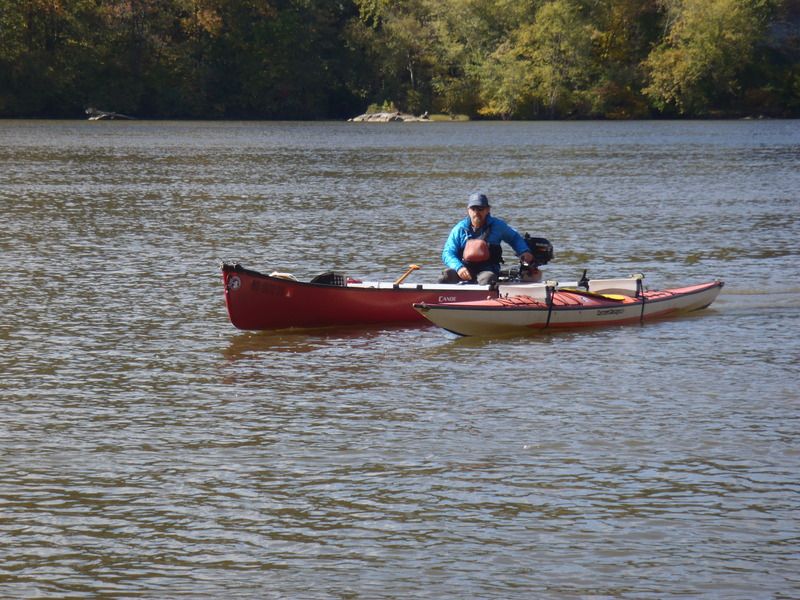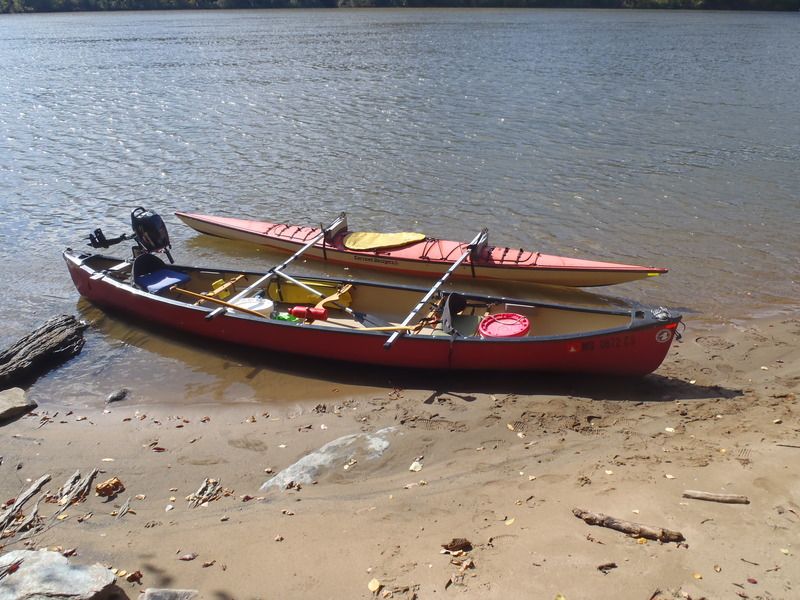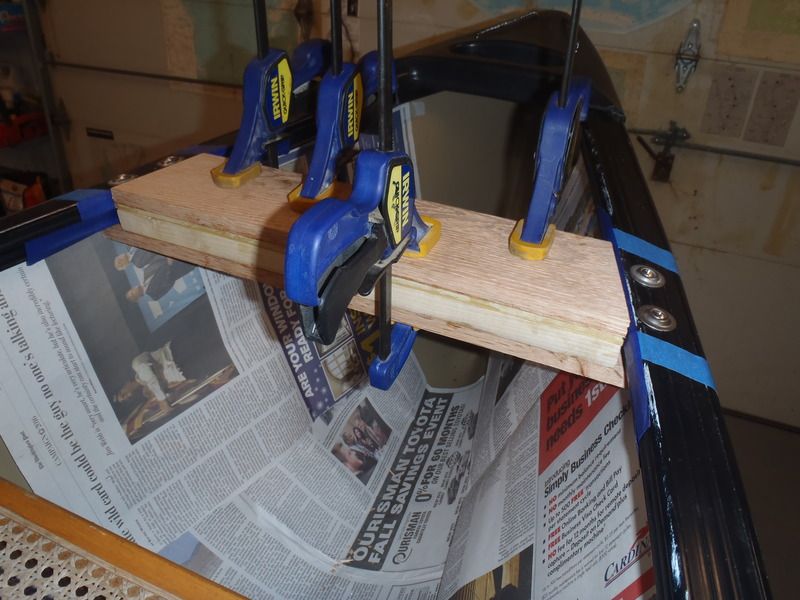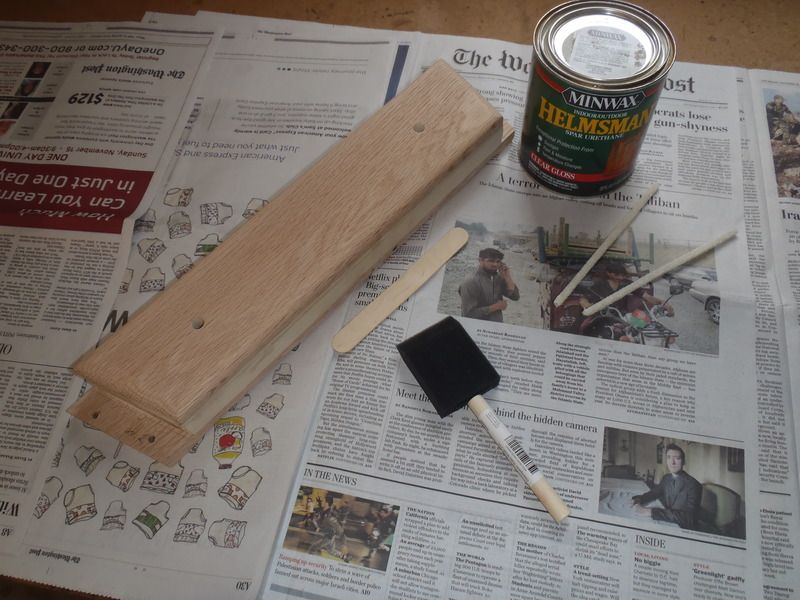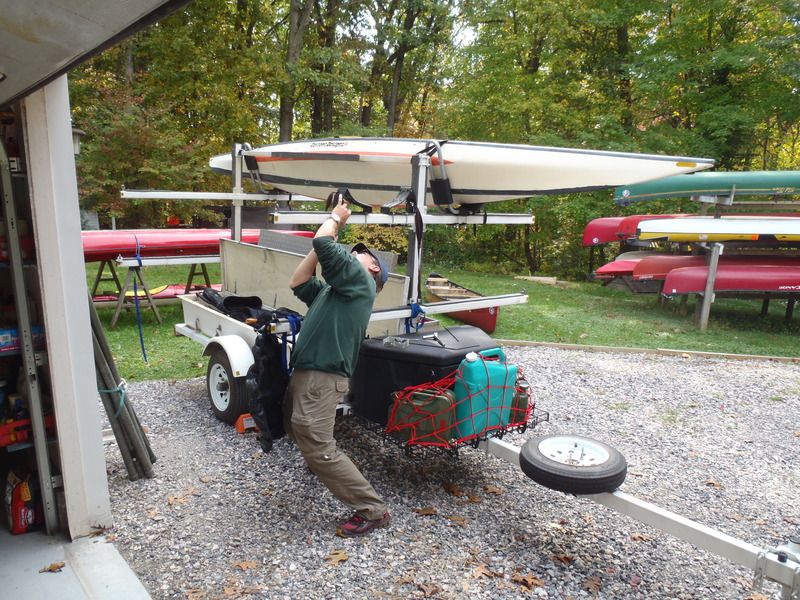The rest of the shop story
One highlight of my shop life is having Joel stop by twice a year, en route north to guide in Maine, and en route south to guide in Florida. Boat maintanence, trailer upgrades, weird outfitting ideas and shop builds.
It is often stuff outside of my norm, and always a learning experience. The motor canoe with releasable kayak ama may be the most educational and evolutionary project yet. To quote Joel’s least favorite chain restaurant “I’m lovin’ it”.
First up, before we could even think of test paddle the motor rig, the canoe needed to be registered as for motor use. This necessitated the Manufacturer’s Certificate of Origin, a photograph of the HIN plate number, a completed registration form, a scenic drive trip to a rural DNR Service Center and $30-some dollars for a 2-year registration.
And some 3” tall registration numbers. You’re up Joel. That 6 looks crooked.

That simple number application wore Joel out, and it was either play guitar or read the Suzuki motor manual. Fearing he might move on to the banjo I suggested the latter.
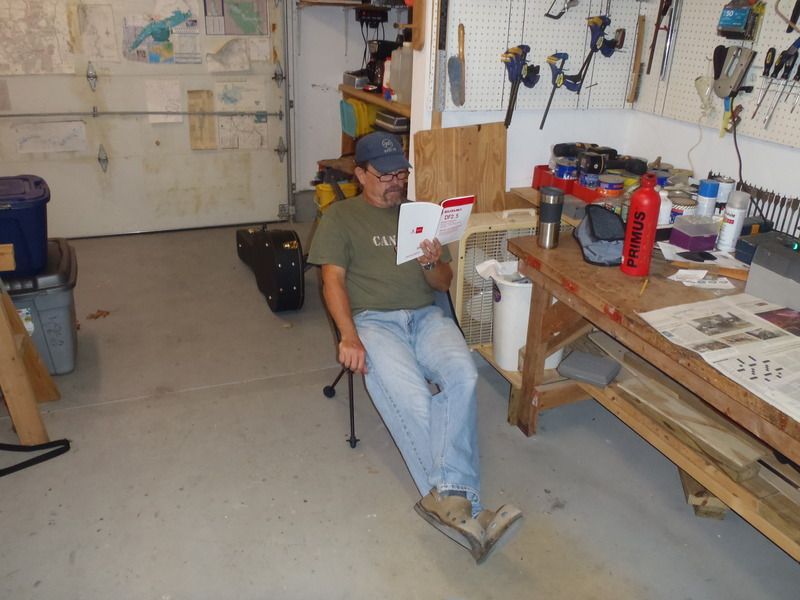
We played with some of the accessories. The Freedom is a Mad River IQ boat, and the IQ accessories finally come in handy. IQ lashings on the bow to hold in a float bag, and an IQ waterproof (drysuit-type zipper) bag to hold flares, flare gun, running lights, tool kit, motor manual and other motor-required gear.
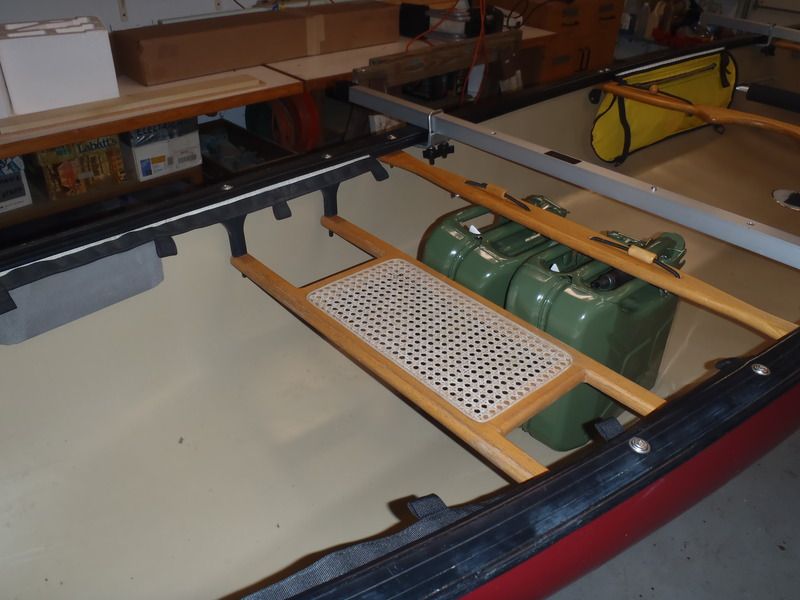
That waterproof zippered IQ dry bag finally found its ideal use.

And whadda ya know, the gas cans fit perfectly snug under the front thwart.

We custom made some minicel saddles for the decks of the Caribou and Nomad. The ^ peaked fore decks of both boats wanted a more angular saddle to fit over the bulkheads.
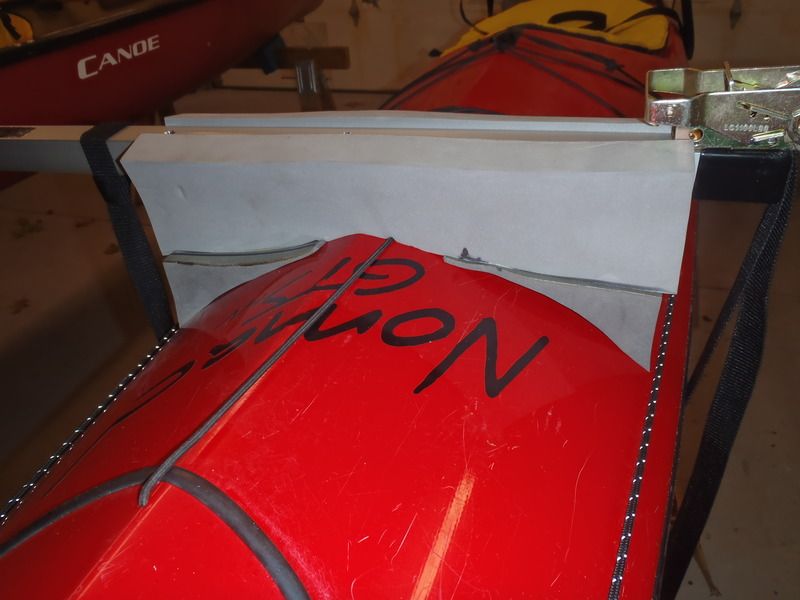
And the flatter rear decks needed some additional height. We may cut that one down some and add a wider minicel footprint for enhance stability and spread. Or leave it and make a couple of other varying height minicel saddles with wider feet. There will be a 20+ foot tandem kayak ama attached at times, and a selection of custom saddles might be helpful.
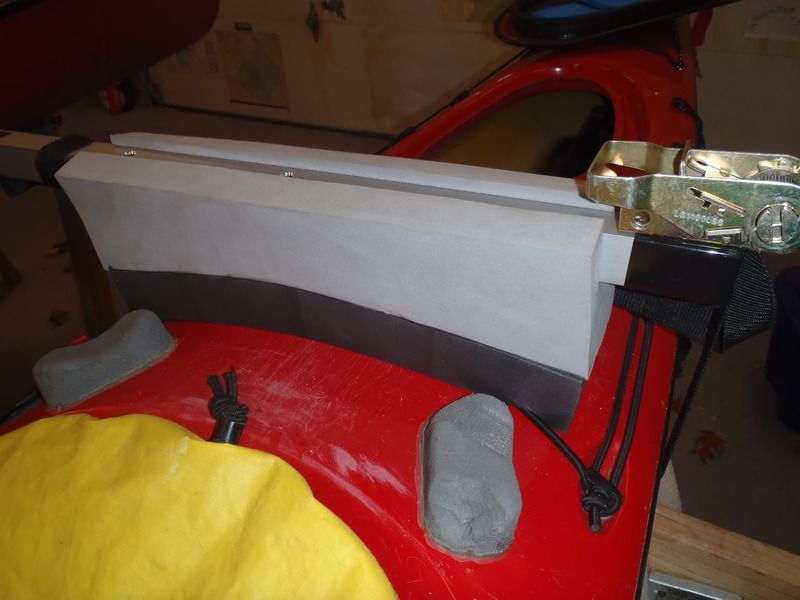
The motor manual recommends a complex break in; idle in neutral for 20 minutes, idle at half throttle in neutral for 20 minutes, etc, etc. We wanted all of that idle in neutral done before we put the boat in the water for a test trip. A saw horse and a trash can full of water to the shop rescue.

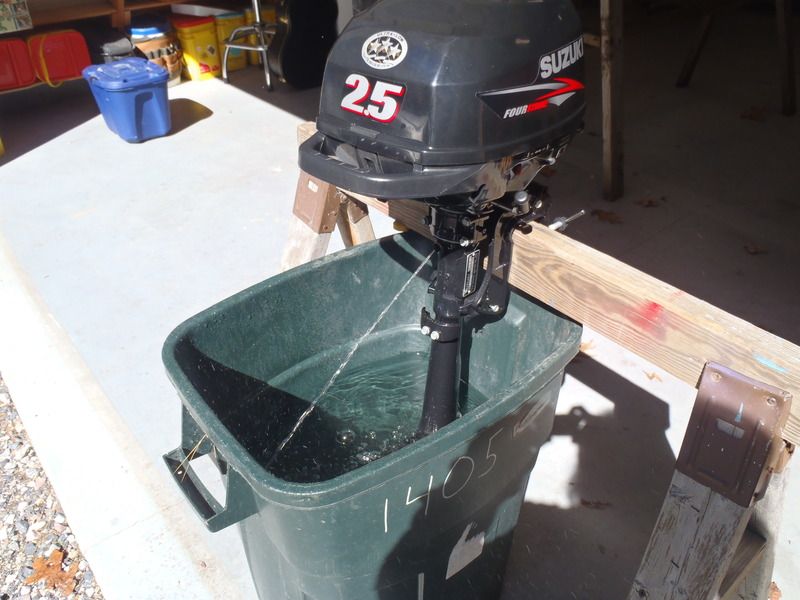
Motor break in complete we played with some more IQ accessories. Oh heck yes; the bow spray cover needs only a couple of snap rivets to fit dry and snug, and the belly cover is perfectly sized to fit between the akas. It’s like some buff designer made those IQ accessories to fit with this rig.

That is quite a stylish hat Joel, but 3 days later and you never did finish lacing the bow float bag in place.
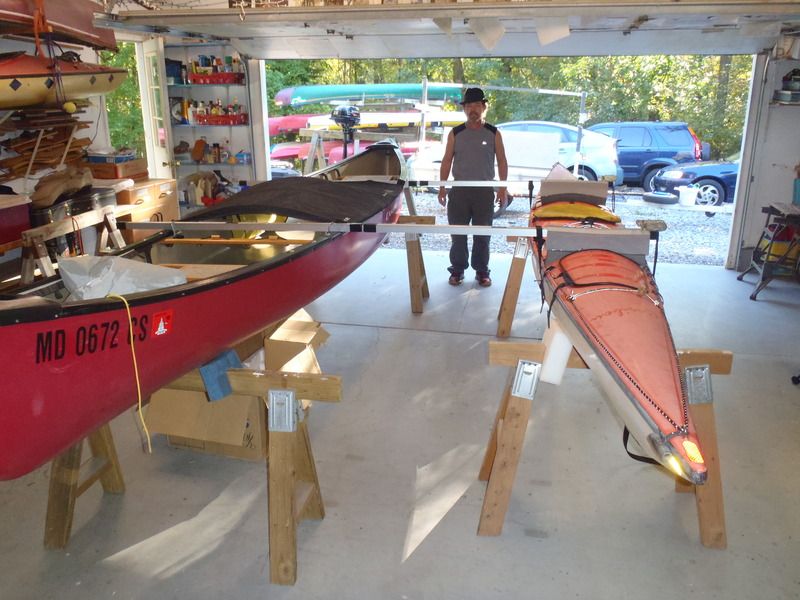
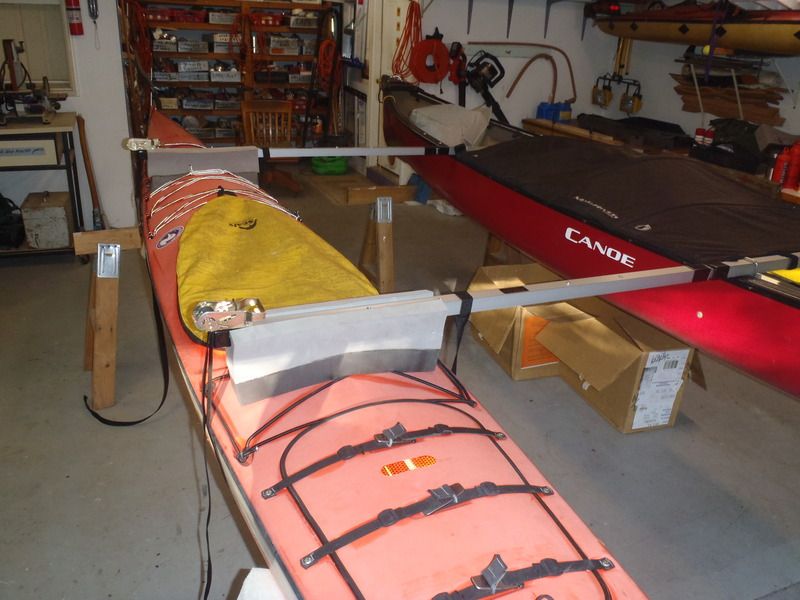
Joel is easily distracted. In this case by adapting a pair of Thule J-cradles to the trailer crossbars.
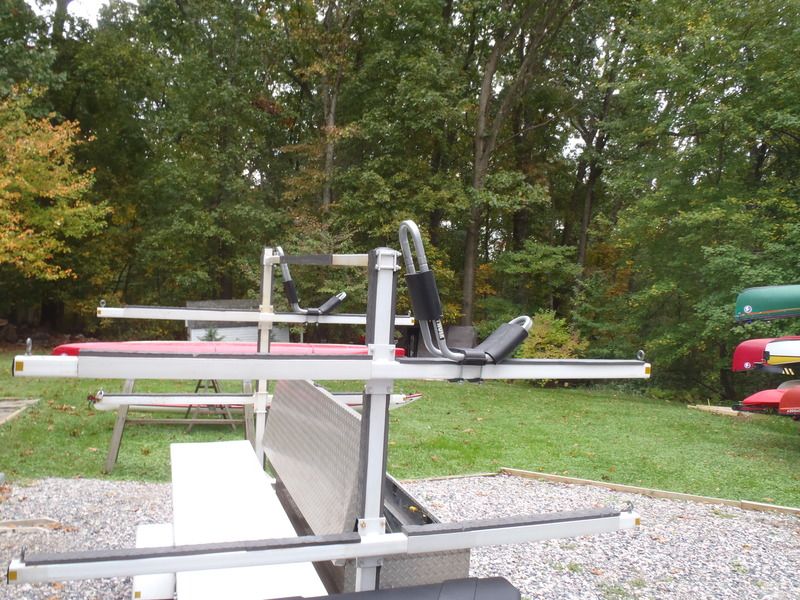

And adding a cage and lightweight cargo container to the trailer tongue, to hold PFDs and empty water containers and other bulkylight gear in transport.

That trailer tongue attachment remains yet another unfinished project Jobert, needing some holes drilled and filled, and run to my country hardware purveyor for a couple more square U-bolts. I’ll start making you a list of projects to finish. Or start.
There evolved another half day of screwing around with the trailer, which had been put together all kinds of bassakwards wrong by the original owners. If we spend another half-day with the cargo boxes and we’ll have it put together right, and fully customized.
The lowest trailer crossbar provides a perfect place to hang the motor for service, for a quick freshwater bucket flush after tidal use or emptying excess gas. I love it when a plan comes together.
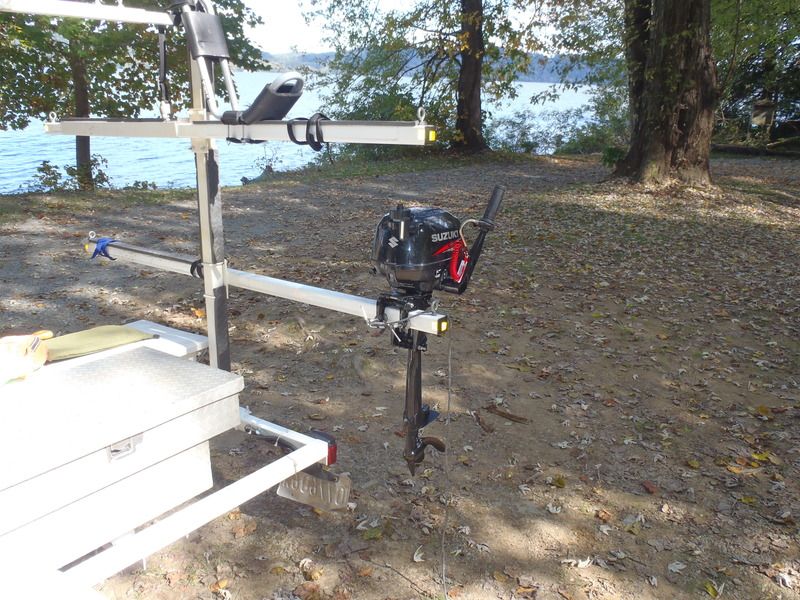
Those stupid plastic sleeves on the trailer crossbars need to disappear, at least along one set of bars for ease of motor mount clamping for service and flushing. Maybe on all the crossbars; what a stupid manufacturing idea that was, adding slip-prone plastic sleeves over the metal crossbars.
At least one set of those ill conceived sleeves should go bye-bye for motor mount ease. The motor mount clamps don’t open far enough to fit over those sleeves.
I’ll add that to your to-do list: Band saw new 2 x 36 strips of exercise flooring for trailer crossbars and contact cement in place.
dang, you got some work to do.

